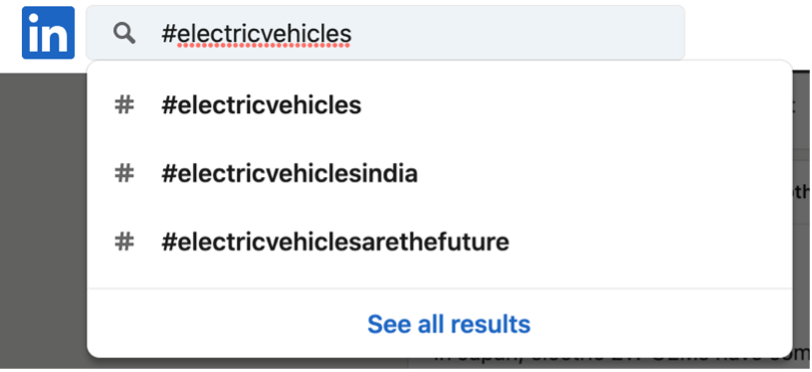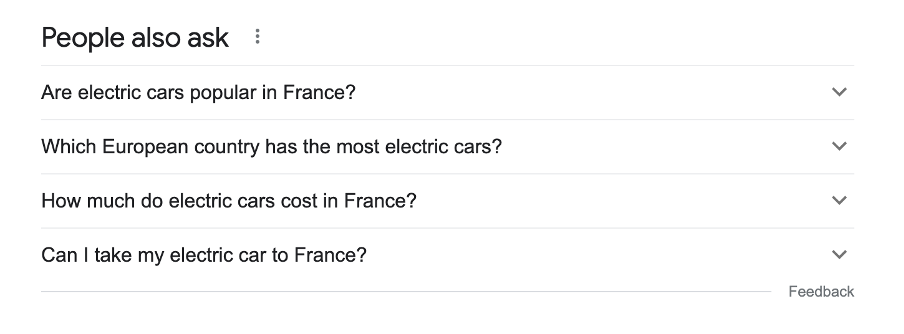5 Ways to find Ideas for engaging content
And position yourself as a thought leader

Lots of companies and organisations have thought leadership strategies nowadays. They are a great way of ensuring new and fresh website or social media content.
Well-developed posts – short or long form - are also an important tool in carving out a larger space for your brand.
Did you know that in the 2021 Edelmann and LinkedIn report on thought leadership, 64% of buyers surveyed said they considered an organisation’s thought leadership content more trustworthy than its marketing materials?
However, even if there is a consensus when it comes to the importance of thought leadership, the challenge for many is two-fold: having both the time and the unlimited supply of ideas to develop consistently interesting articles.
Are you struggling? Let’s look at 5 easy ways to find inspiration!
1. Write about what you know
It’s an adage that people apply to any kind of writing, be it blog posts or novels! Maybe it seems an obvious thing to say, but when looking to create a space for yourself – or your company – home in on subjects you really know something about.
It is easy to fall into the trap of thinking that you have nothing ‘new’ to bring to a subject, but that is probably simply overestimating what your wider audience knows.
The go-to places are obviously the technologies, services, evolutions, innovations and challenges in your industry. Maybe you subscribe to newsletters, journals or other media content? Make a note of what people are talking about – particularly your peers and competitors - and consider how you could talk to those subjects too.
And remember, there are also transversal subjects that can affect your company: equality and diversity, hybrid working, sustainable management … When positioning certain people within the company in terms of thought leadership on social media, it is often good to find out which of these transversal topics they feel comfortable - or interested - in talking about.
This can make for more rounded and diverse content - whilst remaining in your industry niche - and can also be a great way to attract new talent to your company by demonstrating what makes your company tick other than profits.
2. Google Alerts
There is a staggering amount of data generated each day: an estimated 2.5 quintillion bytes in fact, of which around 60% is defined as digestible forms of information generated by humans.
It’s hard to keep up with 1.5 quintillion bytes of content every day, isn’t it?!
That’s why tools such as Google Alerts are great. It allows you to monitor the web for content according to key search words, sending you emails when it finds new results - such as web pages, newspaper articles, blogs, or scientific research—that match your key terms.
As well as keeping you abreast of current subject matter in your field and giving you content you can post and comment on, you can also use this content as inspiration to develop a thought piece around that trending subject matter. Useful new reports or surveys - providing interesting market and consumer data – can also provide data you can apply to your own products or services.
3. RSS Reader Apps
Another way to curate information around certain key topics and develop content ideas for thought leadership strategies is to use an RSS Reader app. If you want to follow specific writers, publications or channels, this can be a great way to aggregate and curate (through key search words) the most interesting content for your purposes.
The good news is that some of these are free – at least up to a certain number of sources. Feedly is a great place to start and very much the industry standard for web-based RSS readers.
4. #Hashtags
Using the pound or number symbol (#), hashtags began life on Twitter before becoming commonplace across many social media platforms. Evolving organically and designed to highlight a certain subject matter, we often spend time considering them when posting new material onto social media.
But let’s not forget that hashtags are also a great way to follow and search on certain topics on the same platforms. Research popular hashtags that apply to your products, services and wider industry and keep abreast as to who is saying what.
To give you an example with LinkedIn, just type ideas of hashtags in the search bar and the platform will even suggest others to you ...

5. (Simple) SEO
Search Engine Optimisation – more commonly known as SEO – is a time consuming and complex subject for many. If you are serious about developing a good SEO strategy, you are best to hire internally or outsource. However, if you want just a quick way to see what questions people are posing about the key subjects you want to address in a thought leadership strategy, here are some quick – and free - options available to you.
The main two are both features offered by Google: Google autocomplete and the People Also Ask (PAA). What are these?
The first – Google autocomplete - is the list of options that will automatically appear when you start typing a certain term into the search bar. For example, this is what appeared when I typed 'Electric vehicles’ …

Google calls these ‘predictions’ rather than suggestions as they are based on analysis of real searches trending on Google and in your location.
The People Also Ask section appears on your results page once you have made a search. For example, this is what appeared when I searched on ‘electric cars France’

The People Also Ask (PAA) feature has become an important facet of SEO and content strategy development more recently. For your purposes, it is completely free of access and another source of inspiration when it comes to what content you could develop. Again, the results are largely indicative of trending search queries at any one time.
Maybe you have heard of Google Trends too? If you want to take your SEO research one step further, this website allows you to look at the popularity of search queries both over time and across different areas and languages.
Rounding Up
As you can probably see, you don’t have to be very technologically savvy to make use of these numerous free tools and they can provide you with endless ideas for developing engaging and relevant content.
And remember, there is always merit to some basic SEO preparation as whatever thought leadership content you publish for your audience, you are also writing with the major search engines in mind. That is, if you want to ensure maximum visibility.
Good luck!
